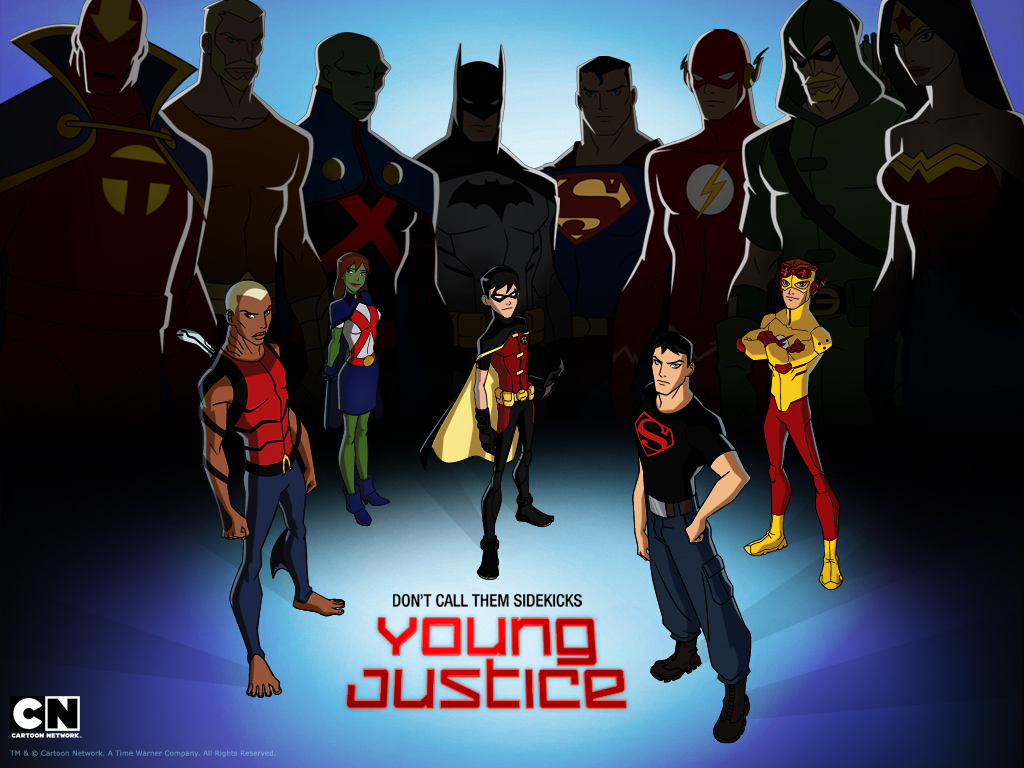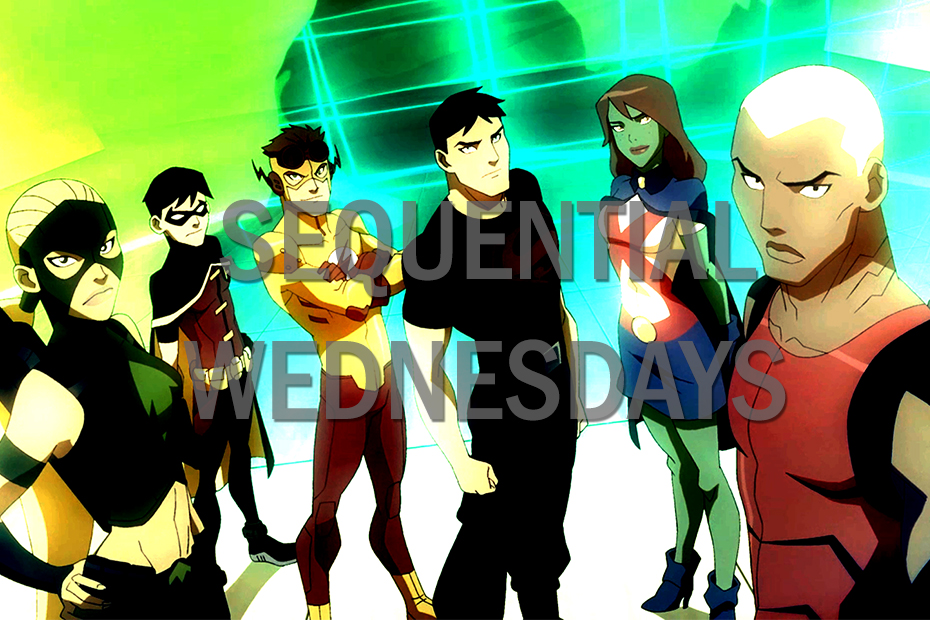All good things come to an end is a truth we all know to be unwavering. Knowing that truth, however, doesn’t lessen the blow when something truly remarkable ends unfulfilled. The most recent entrant into the graying abyss of unfinished and hopelessly brilliant television are the two series Young Justice and Green Lantern: The Animated Series, both part of Cartoon Network’s DC Nation Saturday morning cartoon block that aired an episode of both shows accompanied by quirky and often off-beat animated shorts featuring other characters from the DC Universe. On March 16th, 2013, Cartoon Network aired the last episodes of both shows, both of which ended with well-plotted cliffhangers, clearly made to continue the stories into later seasons. Though both shows are commendable superhero stories, this post is an ode to Young Justice, the magnificent show that not only solidly placed the DCAU (DC Animated Universe) back onto past fans’ radars, but fostered a whole new generation of viewers whose adoration might genuinely outshine any other comic-based cartoon fandom seen.
Young Justice, created by Greg Weisman (Gargoyles) and Brandon Vietti (Batman: Under the Red Hood), is about a group of teenaged sidekicks and protégés forming their own crime-fighting team, all the while attempting to cope with personal issues seen in everyday adolescent life. Over the course of 46 episodes, Young Justice ambitiously features nearly 150 side characters pulled from or directly referencing scores of characters from all over the DC comics multiverse. The story is placed in Earth-16 of the DCAU continuity, which is a widely untapped universe that features a Justice League that’s only existed for five years. For reference, DC has cataloged their various alternate narrative universes by numbering them as Earth-#, some extremely detailed, while others only existing to provide bizarre or anomalous variations of the staple DC continuity. Looking back and comparing Young Justice to previous mainstays of the DCAU, such as the 1992 Batman animated series and 2001 Justice League animated series is akin to comparing Modern Age comic stories to that of the Golden and Silver Age fare. While the earlier series are entertaining and exemplary pieces of condensed mythology that solidify the identities of the primary DC characters, Young Justice uses that base of already understood tradition as a jumping off point to thrust dozens of alternative characters into the limelight and truly allow them to develop.

The first episode, premiering on January 7, 2011 featured sidekicks Robin (Dick Grayson), Speedy (Roy Harper), Aqualad (Kaldur’ahm), and Kid Flash (Wally West) eagerly taking down recognizable villains with their respective mentors in an attempt to hasten their formal admittance into the Justice League itself. They discover that they are not actually fully joining the League are on a vague probationary status, a fact which makes them feel duped about out destiny. Robin, Aqualad, and Kid Flash strike out on their own to investigate a questionable research facility and the team is born. The newly formed alliance confronts the Justice League, determined to be allowed to do good with what they’ve been taught. The full roster of season one, which expands to include Miss Martian (M’gann M’orzz), Superboy (Connor Kent), Artemis (uses her given name), and occasionally Red Arrow (a renamed Speedy) becomes a covert operations only team reporting directly to Batman. This is one of many pieces of Young Justice that sets it apart from pretty much every other superhero team-up show created to date, as the main characters are not necessarily meant to have showy, drag-out fights that level buildings and shatter streets but focus on espionage-based spy missions entailing motion-sensor hacking and information gathering. The tone of the show was decidedly different and often far edgier and darker than what one would expect from Saturday morning cartoons, which is considered one of the reasons Young Justice was not picked up for a third season.
With an overarching narrative pitting the young heroes against an enigmatic society called The Light, a heavy emphasis on showing the story as opposed to adding extraneous dialogue, multiple episodes that feature new characters without formal introductions, intricately designed interpersonal relations between heroes and villains alike, carefully implemented adult themes, and a complex 5-year time jump between seasons, Young Justice was not afraid to seriously challenge its viewership with high expectations, a gamble that was truly commendable. Sadly, the structured complexity of the story and the characters within might have hampered viewership with the show’s intended demographic. Though touting an impressive 8.5 out of 10 stars on IMDB, I doubt any of those ratings were from children ages 7-14.
The true hidden gold to be found in the series was the characterization of the people, from catch-phrases to habits, they were all original and dense depictions of their former selves, often complete with lovely habits that aided in the humanization of each individual. One character would often question affixed words (ie: “disaster” or “overwhelmed”) and begin using the genesis word, often made up. Phrases such as “being whelmed” or “feeling the aster” became staple lines spoken throughout the series. Another character would often have quick arguments with himself, much to the bewilderment of his teammates, the reason for which would not be discovered for many episodes after his introduction. A third, at his first appearance, would introduce alternative jargon, seemingly out of place until it shows back up later as important and risky worldbuilding: the decision to have multiple foreign and alien (non-English) languages spoken throughout the series often untranslated, unless by some ability or technology. Lastly, the inclusion of the perspective of Earth-16’s news media, especially during Season 2, was a thoughtful lens that allowed viewers to see familiar faces from the DC Universe such as Cat Grant and Iris West-Allen.
Though no official statement has been released by Warner Bros. or Cartoon Network on the subject of cancellation of Young Justice, it’s been confirmed that it hasn’t been picked back up for the next year of the DC Nation block.

There is, amazingly, a glimmer of hope for the continuation of both Young Justice and Green Lantern: The Animated Series through a new service called SMGO (Show Must Go On). They are currently setting up talks with Warner Bros. (SMGO staff have stated there is an April 11th meeting scheduled) to get the full rights to both series and facilitate a crowd funding campaign to fuel next seasons. Not only is this an very excited prospect for fans of the incomplete series, but SMGO could prove to be a truly remarkable and even paradigm-changing funding platform that could go on to aid other series that, while with very strong fan bases, were unable to fulfill the needs of distribution and production companies profit margins.
Young Justice was a sterling example of all its parts, equally amazing as a cartoon, a superhero team-up, a conspiracy-laden espionage story, and a goofball teen drama. I look forward to the day where I can return to referring to Young Justice in the present tense until the day that it tremendous story comes to the proper conclusion and once again can feel the aster.
Until forever,
Zach
Pulls
My pulls for 3/27 are:
- Mister X Hard Candy One Shot by Dean R. Motter
- Batman Incorporated #9 by Grant Morrison & Chris Burnham
- Flash #18 by Brian Buccellato & Marcio Takara
- Time Warp #1 by Dan Abnett, Mark Buckingham & Various
- East Of West #1 by Jonathan Hickman & Nick Dragotta
- Five Weapons #2 by Jimmie Robinson
(top image contains promo art of Cartoon Network’s Young Justice season 1)












Recent Comments